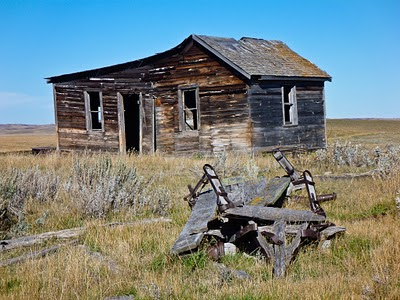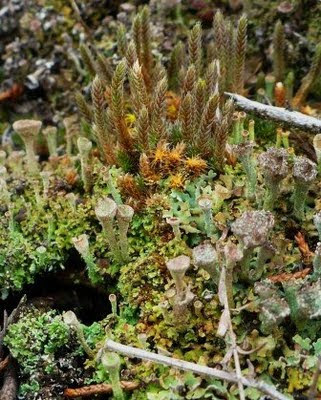
El Designo is a graphic design company in Edmonton. Their fun website states: “We use our wrestling skills to protect the environment, battling papers that lead to deforestation, inks that lead to pollution and printing techniques that create waste.”
I met with Marc Nipp, one of El Designo’s partners in October 2010, and he told me about the origins of his business and some of his methods.
Protecting your Children’s Health and Safety
“I didn’t use to be so aware of environmental concerns,” says Marc Nipp, “but it became very personal when my wife and I started having children.” The couple started with food, examining what their children were putting in their mouths: “We were shocked at what was in some of the products.” As a result, they expanded their research to include everything their children came in contact with.
Some products were really hard to find so Allison MacLean, Marc’s wife, opened Carbon at 10184 104 Street NW to stock and sell the type of products that she wanted to buy for her family. [There is a similar store in Saskatoon, The Better Good.]
El Designo
Marc is a graphic designer, so he prepared all the marketing and design materials for Carbon. He immediately ran into problems as so many of the standard techniques were toxic or bad for the environment.
Marc was already thinking about starting his own design studio. His goal was now to start a green business.
“I didn’t want to wag my finger and shame businesses,” says Marc. “I wanted to do my research and make green solutions economically viable.”
Green design options go far beyond your choice of paper or ink. Instead, the focus is on planning ahead and on developing coordinated marketing strategies. Marc outlined the strategies that his company uses to help customers who are interested in employing green design strategies.
Use as much of the press sheet as possible
Printing presses use large sheets of paper, and there can be a lot of waste if your pamphlet or flyer is not designed to maximize use of the sheet. Marc recommends to his customers that they bundle design projects together as much as possible. By printing postcards, business cards and posters all at the same time, you can make sure that you are using as much of the press sheet as possible.
Marc has also developed a close relationship with the printing company so he knows exactly how the materials will fit on the sheet and can suggest minor adjustments to the publication sizes to make the best use possible of the paper.
Plan ahead so you know how many copies you will need and how frequently they will need to be updated
Stock rooms are often full of surplus materials that end up being thrown out. A little planning can help you avoid this situation. Covers can be designed so that they don’t become outdated. If you know that a document will need updating frequently, it pays to do smaller runs on a digital printer, printing copies as and when needed.
Do your own binding
Marc’s company uses a grommet machine to do their own binding. This way, they can make up what they need, when they need it.
Capture the trial run paper
Printers always do a trial run to make sure that the print job is set up correctly. If you have established a good relationship with your printer, you can capture that paper and use it internally. For example, El Designo uses the trial run as examples in their portfolio.
Be creative about reusing surplus copies of publications
Marc asks customers what they have an excess of to see if maybe it can be transformed into something useful.
El Designo generates a lot of paper waste. They turn outdated paper swatches into mini sketchbooks and give them away as a promotional device. Marc says that European companies are being really creative about reusing surplus materials. One company created 3D snowmen from outdated annual reports and gave them away as promotional items.
Design multi-purpose marketing items
Creative thinking can help you use marketing items for more than one purpose. Carbon placed bus boards on Edmonton’s hybrid buses. At the end of the advertising period, they collected the majority of the banners. Two are now up in the store as banners, while others are held in reserve to be pulled out for trade shows.
Make non-toxic choices
It isn’t just personal perfumes or recycled air that are degrading workplace air quality. Lots of printer inks, plastics and vinyls contain volatile organic compounds (VOC) that are released into the air we breathe. Stockrooms can be very unhealthy places.
 El Designo lets their customers know that there are alternatives (bamboo veneer, wheat board, Mythic Paint). However, many of these products aren’t available locally. The customers themselves weigh up the different options and make their own individual choices.
El Designo lets their customers know that there are alternatives (bamboo veneer, wheat board, Mythic Paint). However, many of these products aren’t available locally. The customers themselves weigh up the different options and make their own individual choices.Will that be paper or electronic?
“I really like paper,” says Marc. “It’s such an important part of our lives, from wedding certificates to drivers’ licenses, and it works really well as a communication tool.” Marc also points out that electronic documents have their own environmental costs – from electricity needs to rapid turnover of electronic equipment.
Marc uses paper that has been certified by the Forest Stewardship Council. He also emphasizes that products that have been well designed will be kept. It’s bad design if your product is immediately thrown out.
Green Design Options
Marc emphasizes that El Designo is, first and foremost, a design studio. “We’re here to start a dialogue with business and see how we can produce greener promotional products. We offer our customers eco solutions, but not all of them are interested.”
On the Lookout for Green Graphic Design Companies
Verda Design & Communications is an eco-friendly, bilingual Winnipeg graphic design, branding, web design and development firm and one of EcoFriendly’s Twitter followers (thanks!). I've also heard of Kimbo, a Vancouver firm that advocates for sustainable design.
I’m not aware of any green graphic design companies in Saskatoon or Regina, but I’d love to be proven wrong. Do let us know if there is one, and we’ll share that information with EcoFriendly’s readers.
What can we do?
Ecological Guide to Paper (Celery Design)
Green Graphic Design
Re-Nourish Tools and Resources
Responsible Graphic Design Tips
Note: This article was originally published on Wanderlust and Words in October 2010






























